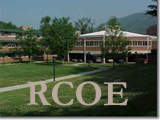Artifact # 12
Literature Circle Unit
Context
A literature circle is a unit that is based on dividing children into
different groups depending on their instructional reading level and allowing
them to learn and explore one children's novel that corresponds with other
novels that the entire class is reading. Each group reads a novel
that matches their reading level. The teacher then assigns each student
in the group a job to complete from the information in each section.
I created this artifact during Spring 2002. It was created by using
Netscape Composer to create web pages that were divided up into three different
grade levels. Each lesson focuses on books that have something to
do with chocolate. (one above grade level, one at grade level, and one
below grade level). The unit focuses on various reading levels, which
allows all students to become engaged in the same topic by reading different
novels. This unit was developed for the fourth grade, but my section
was created for the fifth grade reading level, which was one grade above
the actual reading level.
Impact
This Literature Circle can be used in both Language Arts and the Social
Studies Curriculum. It is very useful when helping students learn
reading and language arts skills. Students are responsible for reading
each section and completing each job, which are interchangeable, that they
are given to them. This type of reading can help students to improve
their reading, writing, and language arts skills. The Literature
Circle, "CHOCOLATE: How Sweet It Is," can be used as an example for
other teachers to go by to create their own literature circle on any topic
or author. It is outlined section by section to show how each job
is completely and they are demonstrated with various examples.
Alignment
This artifact aligns with competency 10.3
because the example can be found on the internet for other teachers to
use within their own classroom. This artifact also aligns with competency
12.5 because this unit allows students to organize the materials that
they find within each section. They must learn to manage their reading
time in order to complete each section to share with their group.
Students are also encouraged to get involved and collaborate with their
group.
Alignment with INTASC Standards
The Literature Circle Unit aligns with INTASC
Standard 1 because it allows students to dig into each chapter to find
various answers based on their jobs. The students are then making
predictions, researching information, and drawing conclusions on their
own based on the information that they find. It may be more beneficial
to the students to find and create their own answer rather than relying
solely on the teacher's opinions because they can began to form their own
opinions and find proof to back them up. The literature circles allow
them to do just that by looking through each section to find answers to
their own questions. They learn by finding and proving the information
themselves, which definitely makes it become a more meaningful experience
for everyone involved.
The Literature Circle Unit also aligns with INTASC Standard 4 because it helps to teach the students using a different instructional strategies to get the idea across. It is an effective way of helping students' develop critical thinking skills, problem solving skills, and performance skills. The students act as the teacher by preparing their jobs to share with their groups.
The Literature Circle Unit also aligns with INTASC Standard 6 because the teacher uses effective verbal, nonverbal, and media communication to teach the students about literature circles and how to complete them. It is an excellent way to get students involved interacting and collaborating with other classmates, than some more traditional language arts lessons.
